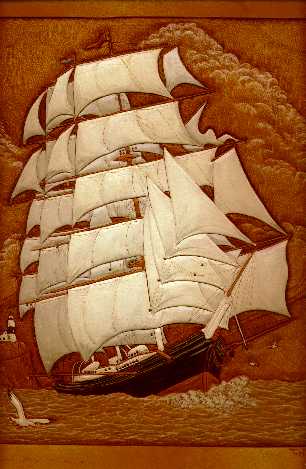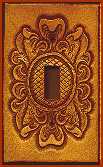
If you want to see more detail just click on the image of course.
 |
You may often find yourself looking for things to make
from various
size smaller pieces and all sizes and weights become useful for a wide
variety of interesting projects This switch plate cover is a good
example
of a useful item which can be decorated in a wide variety of
interesting
styles to suit any room in the house. I have also seen metal backing
applied
for stiffness and 3/4 oz. used to cover an old metal plate.This cover
plate
(2 3/4" x 4 1/2") is made from belt weight cowhide with strips glued to
the back to build it out on the edge. I believe the design is from a
Tandy
Doodle Page by Gene Noland.. |